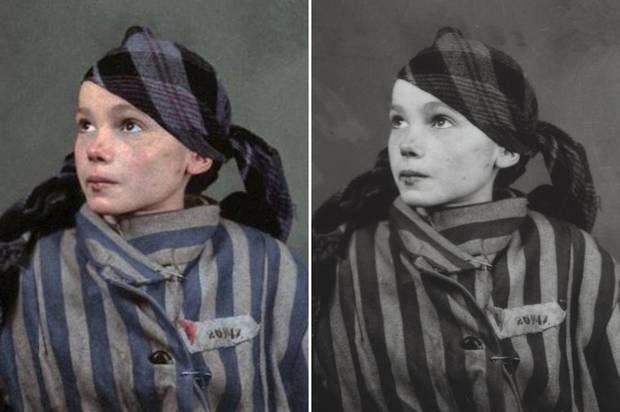
Some images have the power to both move and challenge us more than we ever imagine a photograph could. Emotionally painful, yet needing to exist as a visual conduit to shameful passages in history.
Of these, young girls have often found themselves prominently depicted. Inadvertently defining individual, yet pivotal moments in the photographic-chronicling of their generation.
From the heinous images of 9-year old Phan Thị Kim Phúc Oont, to teenage climate change activist, Greta Thunberg.
The former recognised as the Vietnamese ‘Napalm Girl’ (running down the road in the aftermath of being severely burned). The latter lionised as the modern-day advocate for our eleventh-hour environmental awakening.
Should we delve further back into history though, and we uncover a darker chapter still.
The Courage of Young Girls Encapsulated in Photography Leaves Nothing to Our Imagination
What makes the evocative images you see here even more difficult to pictorially comprehend, is that they’ve been subject to a detail-led graphic transformation. So as to ensure that these haunting photographs instil an even more innate sense of relatability today.
Relatable is the key word.
We see in full colour; therefore, we think and feel in full colour. What’s more, we laugh, love, cry and live our lives in full colour. And always have had.
Everything we touch, taste, smell, feel, characterise and most importantly, relate to, exists in just that. Full colour.
New Perspective on History Coloured by Humanity’s Darkest Hours
The most sensitive of photographic touches is essential, when the viewer is asked to relate to the levels of barbarity carried out against the Jewish people by Hitler‘s malevolent cohorts. Here, etched so vividly – and poignantly – across the face of this young Polish girl.
Black and white photographs sometimes demand a modern adaptation and injection of colour. If only to afford us a timely and stark reminder as to past atrocities. Leaving an indelible impression which lingers long in the deepest recesses of our conscience.

Who is This Girl?
Her name is Czesława Kwoka and she met her death in Auschwitz at the age of just 14. The circumstances surrounding her death, never recorded.
Accounted as one amongst thousands of child victims of crimes carried out against the Polish people, Czeslawa was memorialized in an Auschwitz-Birkenau State Museum exhibit.
Entitled; ‘Block No. 6: Exhibition: The Life of the Prisoners.’
Together with her mother, Czeslawa was seized from her normal life and taken against her will to Auschwitz, on 13th of December 1942. Her identity, as well as her future fate sealed. Czeslawa was known thereafter only as prisoner number 26947.
Less than a month after arriving, Czeslawa’s mother fell victim to the Nazi’s sickening ethnic cleansing regime.
Images with Eerie Presence to Shock Humanity to its Very Core
As part of their record-keeping protocol, the Reich photographed each of the new arrivals at concentration camps. Czeslawa being no exception to forced to sit for such ‘identity pictures’.
The man responsible for taking the original photograph of Czeslawa was a fellow Polish inmate. Himself incarcerated at Auschwitz-Birkenau. Ordered to document the abject horrors he was privy to, Wilhelm Brasse did so under extreme duress.
An experienced photographer in his early 20s, he’d trained as a portrait photographer under his aunt at her studio prior to the 1939 German invasion of their country. Death would almost certainly have been his fate too. Had he not reluctantly complied with this command.
Fellow Polish Inmate Preserves Photographic Authentication of Heinous Regime
Instructed to obtain the photographical likeness of inmates from three aspects – one front, two in profile – Brasse was then expected to follow subsequent directives. Chiefly those purtaining to the systematic destruction of photographs and their negatives.
Instead, and at considerable risk to his own life, he ignored these orders; managing to save some of the images. Which brought him – and his photographs – to prominence at the end of the conflict.
These collections – including the original photographs which feature Czeslawa seen here – went on to form an exhibition in the Auschwitz Museum’s photographic memorial section.
Taken between 1940 and 1945, several of the images were discussed by Brasse in a 2005-broadcast television documentary focused on him. This in turn led to further interviews, after ‘The Portraitist‘ had aired.
Since then, the photographer’s work has been cited in a number of articles and books.

How Czeslawa’s Plight Was Brought into Even Sharper Focus, Courtesy of Today’s Digital Artists
Clearly inspired by Brasse’s work, this is where we’re introduced to Brazilian digital creative, Marina Amaral.
It was this acclaimed 23-year old artist who observed Brasse’s original pieces, and who then painstakingly coloured Czesława’s photograph. So as to effectively change the way we look at victims of the Holocaust. Altrusically altering our perceptions and adding even more emotional layers to what went before.
To coincide with the 75th anniversary of her death, 2017 saw the digitally-enhanced colour adaptations of the photographs of Czeslawa first published.
“Holocaust victims had dreams, family, friends and they had it all taken from them.”
Amaral, talking about her motivations
It was Amaral’s overwhelming wish to bring ‘Czeslawa’s image and voice into our lives.’
With creative collaboration from Theresa Edwards and Lori Schreiner, Amaral created ‘Painting Czesława Kwoka’.
A mixed media piece inspired by Brasse’s photographs, and manifest as a commemoration of child victims of the Holocaust.
